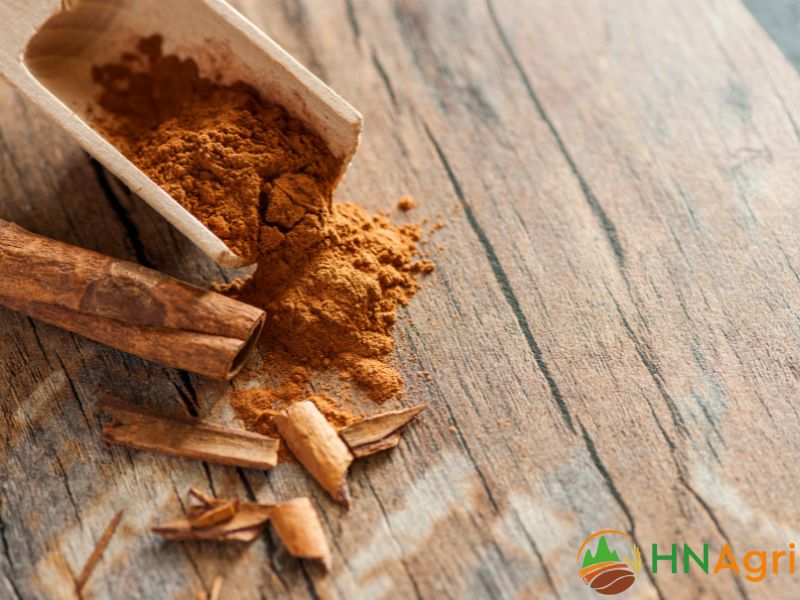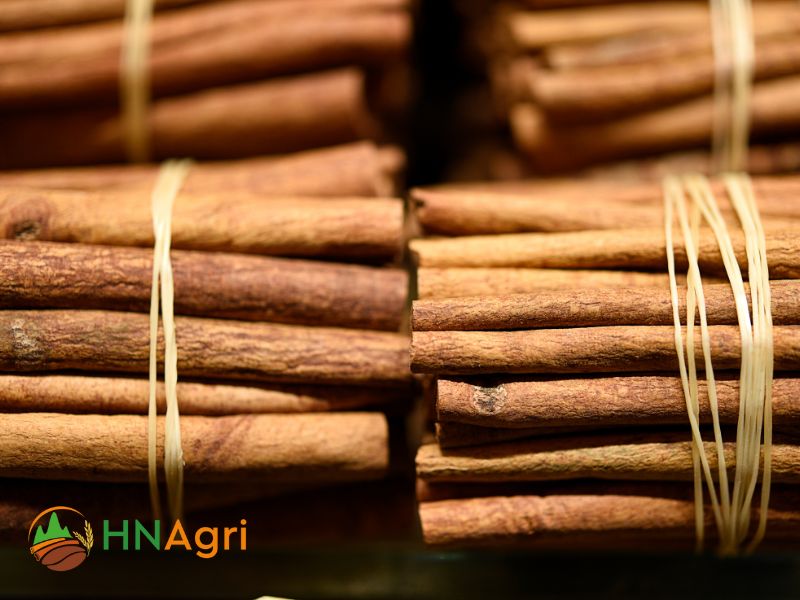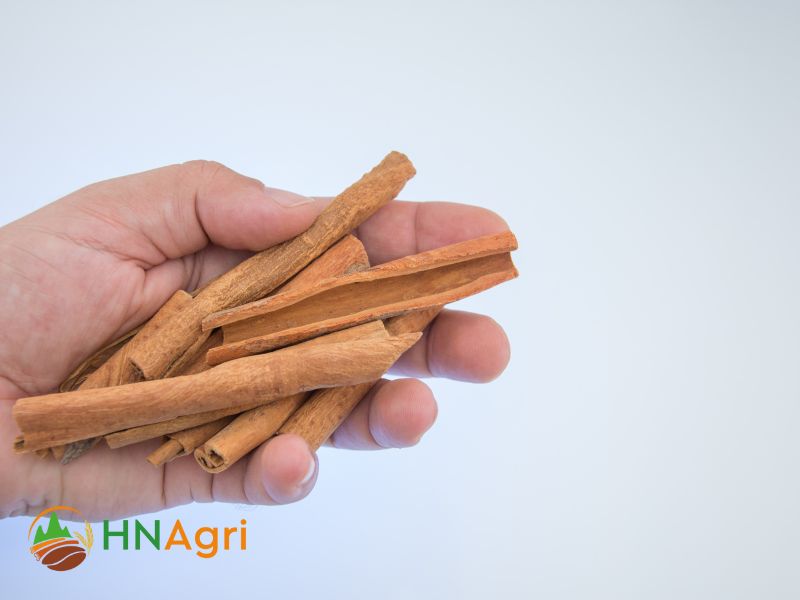Revealing The Secret Of The Vietnamese Art Of Cinnamon Production

- :
- : Vietnamese cinnamon
- :
- : Còn hàng
Are you curious about the fascinating world of cinnamon production? Look no further! In this article, we will take you on a journey to uncover the hidden secrets behind the art of cinnamon production by the Vietnamese people. From its cultivation to processing techniques, prepare to be amazed by the rich heritage and meticulous craftsmanship that goes into every step.
1. Rich history of cinnamon production in Vietnam
Cinnamon production and export has been an important part of Vietnam’s agriculture and economy for centuries. This country’s rich history of cinnamon production goes back hundreds of years, carrying with it secrets and amazing achievements:
1.1. The origin flame of Vietnamese cinnamon production
According to historical documents, from the Ho Dynasty (1400-1407) to the Le Dynasty (1428-1527), Vietnam became one of the leading cinnamon producing and exporting countries in the Southeast region. ASIAN. The dynasties and merchants promoted the cultivation and development of cinnamon in various regions of Vietnam, but especially in the northern mountainous provinces.
The cinnamon tree is not only grown for its fruit and bark, but other parts such as leaves and branches are also used in traditional medicine and religious ceremonies. This shows the diversity and utility of cinnamon in the life and culture of Vietnamese people.
From those ancient fires, the Vietnamese people have continued to develop the art of planting and caring for cinnamon trees, maintaining and passing on the techniques and know-how of quintessential cinnamon production to the next generation. Today’s cinnamon production is not only an important source of income for many farming families, but also the pride of a unique cultural heritage of Vietnam.
1.2. Some outstanding achievements of cinnamon production in Vietnam
Cinnamon production in Vietnam has achieved many outstanding achievements during the past time. Here are some notable achievements of this industry:
- Product quality: Vietnamese cinnamon is appreciated for its quality and taste. Vietnamese cinnamon has a distinctive aroma and freshness, making it popular in cooking, beverage, and cosmetic products. Vietnamese cinnamon products have been recognized and exported to many countries around the world.
- Expansion of planting area: Vietnam has expanded the area planted with cinnamon to meet production and export demand. In particular, the northern mountainous provinces such as Yen Bai, Lao Cai and Quang Nam have become famous cinnamon growing areas. The expansion of planted area has created jobs for many rural people and contributed to local economic development.

- Research and technology application: The cinnamon industry in Vietnam has invested in research and technology application to improve production efficiency and product quality. The methods of growing, caring, harvesting and processing cinnamon have been improved and optimized, ensuring uniformity and efficiency in the production process.
- Cinnamon exports: Vietnam’s cinnamon has become a major export product, contributing to the country’s export earnings. Cinnamon products from Vietnam have been exported to many international markets, including Asian countries, Europe and North America. Product diversity and reliable supply have helped Vietnam build a reputation in the international cinnamon market.
- Conservation and sustainable development: The cinnamon production industry in Vietnam has focused on the conservation and sustainable development of cinnamon supplies. Programs and projects have been implemented to ensure sustainability in cinnamon cultivation, resource management and environmental protection. This ensures that the Vietnamese cinnamon industry can survive and develop for a long time.
These achievements have made cinnamon production in Vietnam an important field in agriculture and contributed to the country’s economic development.
See more: INDIAN CINNAMON A FRAGRANT SPICE TREASURE FROM THE SUBCONTINENT
INDIAN CINNAMON A FRAGRANT SPICE TREASURE FROM THE SUBCONTINENT
2. The role of cinnamon production in the livelihoods of the Vietnamese community
Cinnamon production plays an important role in the livelihood of the Vietnamese community. Here are some key roles of cinnamon production in the livelihoods of Vietnamese communities:
- Source of income and employment: Cinnamon production creates a stable source of income for many farming families in cinnamon growing areas. The planting, tending and harvesting of cinnamon provides jobs for rural people, helping to improve living standards and reduce poverty.
- Local economic development: Cinnamon production contributes to local economic development. The expansion of cinnamon growing area and the export of cinnamon products creates business opportunities, promotes commercial activities and enhances local income.
- Cultural Heritage Conservation: Cinnamon has become an integral part of Vietnamese traditional culture. Cinnamon production helps preserve and pass on the techniques of growing, caring and processing cinnamon from generation to generation. This ensures the existence and sustainable development of the cinnamon cultural heritage in the community.

- Building international reputation: Cinnamon products from Vietnam have been exported to many international markets. The product variety and high quality have helped build the reputation of Vietnamese cinnamon in the international market. This brings great economic benefits to producers and contributes to the national image.
- Sustainable development and environmental protection: Cinnamon production can promote sustainable development and protect the environment. The adoption of sustainable planting practices, resource management and pest control help maintain balance in the ecosystem. At the same time, the cultivation of cinnamon can help prevent landslides and protect biodiversity.
With the important role of cinnamon production for the livelihoods of the Vietnamese community, the development and protection of the cinnamon production industry should be promoted and supported, ensuring sustainable development and creating favorable living conditions. good for the community.
3. Special planting method in cinnamon production in Vietnam
In the production of cinnamon in Vietnam, there are some special growing methods applied to ensure that the cinnamon tree grows well and achieves high quality. Here are some of these special growing methods:
- Choose the right location and soil: Choosing the location to plant cinnamon is very important. The soil needs to be relatively moist and well-drained, and not waterlogged. The soil needs to be rich in nutrients and able to hold moisture to meet the growth needs of the cinnamon tree.
- Using high-quality mother plants: To ensure the quality and characteristics of the crop, cinnamon producers often use high-quality mother plants to tame and produce seedlings. The selected mother plants must have good characteristics such as vigorous growth, disease resistance, and quality cinnamon production.
- Sowing or cuttings: Cinnamon can be grown from seed or by cuttings. Sowing is usually done during spring or summer time. Cuttings are the method of using young shoots, roots or cuttings to create new seedlings. Cuttings are often used to replicate and maintain the characteristics of a high-quality mother plant.
- Cinnamon Tree Care: Cinnamon tree care includes watering, fertilizing, weed removal, and pest control. Cinnamon trees need to be watered regularly and ensure enough moisture during growth. Organic and mineral fertilizers need to be done to provide nutrients to the plants. Pest control is necessary to ensure that the plant is not affected by harmful pests and fungi.
- Harvesting and Processing: When the cinnamon tree reaches the right age and size, the cinnamon is harvested and processed. Cinnamon is usually harvested when the outer bark begins to turn brown. The cinnamon is then dried, peeled, and processed into various products such as cinnamon powder, cinnamon oil, or cinnamon wings.
The special growing method in cinnamon production in Vietnam helps to ensure the quality and yield of the cinnamon tree, thereby meeting the demand for high quality cinnamon production and export.




